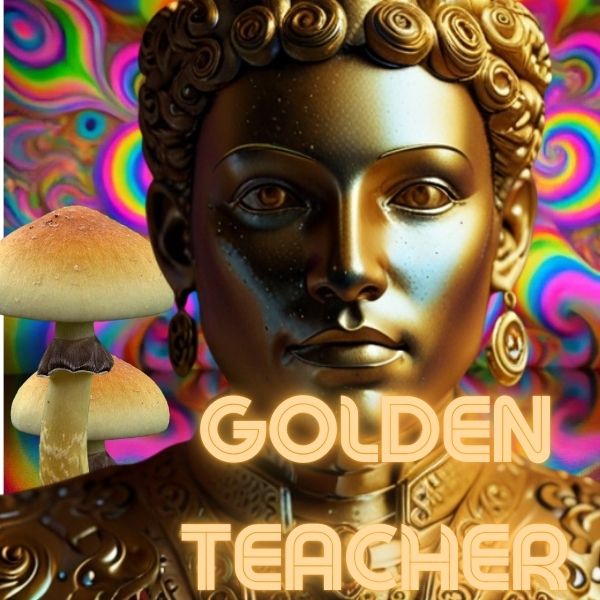The use of magic mushrooms goes back a long way in history. Archaeological finds and historical records show that mushrooms with psychoactive properties were used thousands of years ago, especially in religious and spiritual rituals. Some of the earliest evidence of the consumption of magic mushrooms comes from cave paintings and stone carvings in North Africa and Europe, dating back to around 7,000 to 9,000 years BC.
1.1. Mesoamerika: Die „Fleisch der Götter“-Rituale
One of the best known and best documented historical uses of magic mushrooms took place in Mesoamerica, where indigenous peoples, particularly the Aztecs, used psilocybin-containing mushrooms in religious ceremonies. The Aztecs referred to these mushrooms as “Teonanácatl”, which translates as “flesh of the gods”. They believed that these mushrooms gave them access to the world of the gods and served as a bridge between the physical and spiritual worlds.
Spanish conquistadors in the 16th century documented that the Aztecs used magic mushrooms in sacred rituals to experience visions and facilitate communication with supernatural forces. These rituals were often accompanied by dancing, singing and deep meditation.
2. the fall of magic mushrooms into oblivion
With the arrival of the Spanish conquistadors in the 16th century and the spread of Christianity in Mesoamerica, the use of magic mushrooms and other psychoactive substances was severely suppressed. The Catholic Church considered such rituals to be pagan and heretical, and many of the old traditions were banned or lost.
Although the use of magic mushrooms was pushed underground, some indigenous communities in remote regions of Mexico and South America held on to their rituals and preserved the knowledge of the mushrooms for centuries.
3. the rediscovery in the 20th century
The history of magic mushrooms experienced a decisive turning point in the middle of the 20th century when they were ‘rediscovered’ by Western researchers and adventurers. One of the most important pioneers in this context was R. Gordon Wasson, an American ethnomycologist who traveled to the remote regions of Mexico in the 1950s to study the ancient mushroom rituals.
3.1. R. Gordon Wasson und Maria Sabina
Wasson traveled to Oaxaca, Mexico, where he met the shaman Maria Sabina, who was using magic mushrooms in her healing rituals at the time. In 1957, Wasson took part in one of these ceremonies and documented his experiences in an article for Life magazine. This article brought magic mushrooms and their psychoactive effects to the attention of the Western public and sparked a growing cultural and scientific enthusiasm.
Maria Sabina, who was considered the guardian of ancient knowledge, unwittingly opened the doors to a new era of research into psychedelic substances. Many Western scientists and hippie travelers followed Wasson’s footsteps to Mexico to gain their own experiences with magic mushrooms.
4. the psychedelic revolution of the 1960s
In the 1960s, magic mushrooms, along with other psychedelic substances such as LSD and mescaline, played a central role in the emerging counterculture. This era, characterized by the search for consciousness expansion, spiritual enlightenment and personal freedom, saw the use of psilocybin in a new light.
4.1. Timothy Leary und die Erforschung des Bewusstseins
One prominent proponent of the use of psilocybin was Timothy Leary, a psychology professor at Harvard University. Leary conducted experiments with psilocybin to study its effects on human consciousness. He believed that psychedelic substances could bring about a profound change in the human psyche and usher in a new era of mental evolution.
Leary and his colleagues experimented with psilocybin in controlled environments to investigate the spiritual and psychological effects of the substance. However, the growing popularity of psychedelic drugs also led to political pressure and social backlash.
4.2. Das Verbot psychedelischer Substanzen
With the increasing use of psychedelic drugs in the counterculture of the 1960s, governments around the world began to regulate and ban these substances. In the USA, psilocybin and other psychedelics became illegal in 1970 under the Controlled Substances Act, which severely restricted scientific research into these substances for decades.
5 The comeback of magic mushrooms: modern science and research
In recent decades, magic mushrooms have made a surprising scientific comeback. Researchers around the world have begun to investigate the potential therapeutic applications of psilocybin, particularly in the field of mental health.
5.1. Psilocybin in der modernen Medizin
Modern studies show that psilocybin can show promising results in the treatment of depression, anxiety, PTSD and addiction. There is evidence that controlled use of psilocybin under medical supervision can have profound therapeutic effects, particularly in patients who do not respond to conventional treatments.
5.2. Die Renaissance der psychedelischen Therapie
Institutions such as Johns Hopkins University and Imperial College in London have made significant advances in the study of psilocybin. This research is often referred to as the “renaissance of psychedelic science” and could pave the way for wider acceptance and legalization of psychedelic therapies.
Conclusion: The future of magic mushrooms
The history of magic mushrooms is a story of rise, prohibition and rediscovery. While they were revered as sacred substances in many ancient cultures, their banishment by modern societies led to decades of oblivion. Today, in the 21st century, magic mushrooms are experiencing a new wave of recognition – not only as spiritual aids, but also as potentially life-changing tools in medicine and psychotherapy.
Click here to go to the store
Would you like to learn more about the fascinating world of magic mushrooms and how they can influence your life? Visit our store and discover high-quality mushroom-related products!





